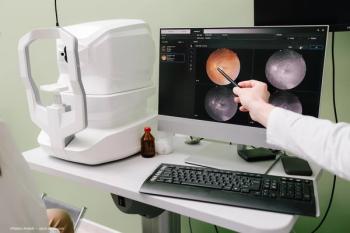
|Articles|August 1, 2003
Subretinal device improves visual function in RP patients
Author(s)Nancy Groves
Fort Lauderdale, FL-Visual function improvement is still apparent and better than ex-pected more than 3 years following the first implantation of a subretinal Artificial Silicon Retina (ASR, Optobionics Corp.) micro-chip in patients experiencing vision loss from retinitis pigmentosa (RP). This degree of improvement could be due at least in part to a neurotrophic effect, said Alan Y. Chow, MD, co-developer of the ASR.
Advertisement
Newsletter
Don’t miss out—get Ophthalmology Times updates on the latest clinical advancements and expert interviews, straight to your inbox.
Advertisement
Latest CME
Advertisement
Advertisement
Trending on Ophthalmology Times - Clinical Insights for Eye Specialists
1
STAAR Surgical terminates proposed acquisition by Alcon
2
Innovations in glaucoma poised for breakthrough in 2026 (and what might hold them back)
3
Rates of retinal layer thinning predict visual field progression in glaucoma
4
FDA grants Breakthrough Therapy Designation to Oculis’ privosegtor for optic neuritis
5













































